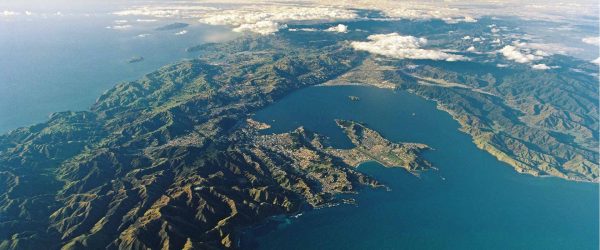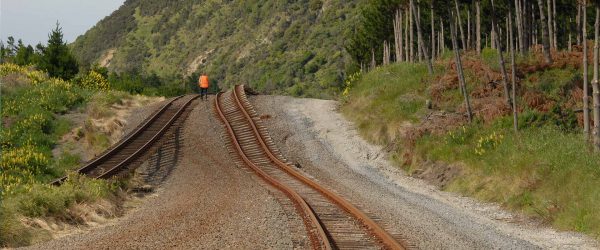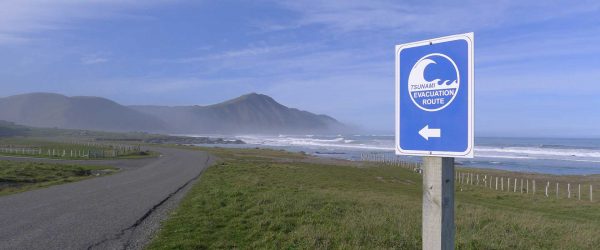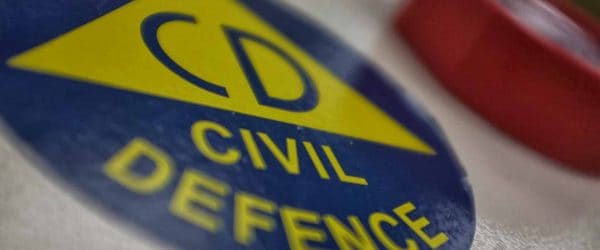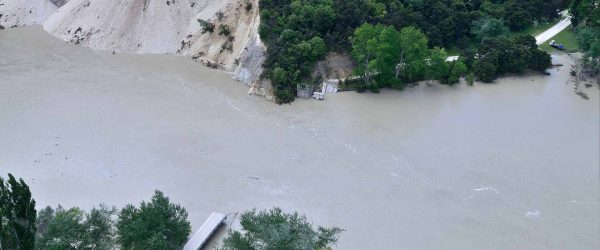Earthquake & Tsunami
Ngā Rū me ngā Tai Āniwhaniwha
Vision
Innovative earthquake science to make Aotearoa New Zealand’s economy, infrastructure and communities more resilient to earthquakes and the hazards they cause.
Programme description
The risk posed to Aotearoa New Zealand’s prosperity and people by earthquakes and their consequences has been clearly demonstrated by research and observations of the 2010-11 Canterbury and 2016 Kaikōura earthquakes. Our national resilience to earthquakes can be improved with reliable earthquake and tsunami hazard models, and more detailed understanding of earthquakes and the hazards they cause, including ground shaking, tsunami and landslides.
We aim to give decision-makers and planners the insights they need to effectively mitigate the risk of earthquakes and the primary (strong ground shaking) and secondary (tsunami, landslides) hazards they cause.
To achieve this, we worked closely with stakeholders and partners in central and local government to:
- Create computer models of the earthquake process specific to Aotearoa New Zealand and test those models against earthquakes we see in nature. This results in catalogues of synthetic earthquakes that helps us overcome the challenges posed by the short window of real earthquake observations we have.
- Use these catalogues to improve our understanding of likely impacts from earthquakes including strong ground shaking, tsunamis and landslides.
- Test the usefulness of available earthquake and tsunami early warning technologies, and make recommendations for suitable warning systems for Aotearoa New Zealand. Refined estimates of the likelihood of large earthquakes and the hazards they cause will improve Aotearoa New Zealand’s resilience by helping decision-makers, businesses and communities plan and take mitigation actions.
Wawata
Kia auaha te pūtaiao mō ngā rū kia manawaroa ake ai te ōhanga, te tūāhanga me ngā hapori ki ngā rū me ōna mōreareatanga.
Whakaahuatanga papatono
Kua āta whakaatuhia e ngā rangahau me ngā tirohanga o ngā rū i Ōtautahi i ngā tau 2010-11, i Kaikōura hoki i te tau 2016 i ngā tūraru me ngā hua o ngā rū ka pā ki te tōnuitanga me ngā tāngata o Aotearoa. Ka taea te whakapai ake i tō mātou manawaroa ki ngā rū mā ngā tauira horopū mō ngā mōrearea rū, tai āniwhaniwha hoki, me te mārama āmiki ki ngā rū me ōna mōreareatanga, tae atu ki te rū o te whenua, te tai āniwhaniwha me te horowhenua.
E whai ana mātou ki te tuku māramatanga ki ngā kaiwhakatau me ngā kaiwhakamahere e pai ai te whakamauru i te tūraru o ngā rū me ōna mōrearea matua (te kaha rū o te whenua), mōrearea mātāmuri hoki (tai āniwhaniwha, horowhenua).
Hei whakatutuki i tēnei, kei te mahi tahi mātou ki te hunga whaipānga me ngā hoa rangapū i te kāwanatanga ā-motu, ā-rohe hoki ki te:
- Waihanga i ētahi tauira rorohiko o te tukanga rū motuhake ki Aotearoa, ka whakamātauhia aua tauira ki ngā rū ka kitea i te taiao. Ko te hua o tēnei ko ngā rārangi rū horihori hei āwhina i a mātou ki te tūraki i ngā uauatanga ka puta i te iti noa o ā mātou tirohanga ki ngā rū tūturu.
- Whakamahi i ēnei rārangi kia mārama ake mātou ki ngā pāpātanga ka puta pea i ngā rū, tae atu ki te kaha o te rū o te whenua, ngā tai āniwhaniwha me ngā horowhenua.
- Whakamātau i te pai o ngā hangarau whakatūpato tōmua e wātea ana, ka tuku tūtohunga hoki mō ngā pūnaha whakatūpato e tika ana mō Aotearoa. Mā ngā whakatau tata pakari mō te tūponotanga ka puta tētahi rū nui me ōna mōrearea e whakapai ake ai i te manawaroa o Aotearoa mā te āwhina i ngā kaiwhakatau, ngā pakihi me ngā hapori ki te whakamahere, ki te whai hoki i ngā whakaritenga whakamauru.
Questions we’re answering
Research Team
Co-Funding Partners
Earthquake & Tsunami
Latest Resource Outputs
Challenge Lifetime Summary
A summary of Resilience Challenge achievements and impacts over ten years of collaborative research
The role of heterogeneous stress in earthquake cycle models of the Hikurangi-Kermadec subduction zone
This study tests the role of spatial heterogeneity in the distribution of the initial stresses and frictional properties on earthquake cycle simulations, focusing on the Hikurangi–Kermadec subduction zone.
Estimating S-Wave intensity for early earthquake warning in New Zealand: Leveraging the first 3 seconds of P-wave intensity
C. Chandrakumar, M.L. Tan, C. Holden, M.Stephens, A.Punchihewa, R. Prasanna 2024 Estimating S-Wave intensity for early earthquake warning in New Zealand: Leveraging the first 3…
A review of approaches for submarine landslide-tsunami hazard identification and assessment
J.H.M. Roger, S.Bull, S.J. Watson, C. Mueller, J.I.T. Hillman, A.Wolter, G. Lamarche, W.Power, E. Lane, S.Woelz, S.Davidson 2024 A review of approaches for submarine landslide-tsunami…
Earthquake early warning systems based on low-cost ground motion sensors: A systematic literature review
Low-cost ground motion sensors are becoming a promising solution for constructing an affordable yet reliable and robust earthquake early warning system.
Algorithms for detecting P-waves and earthquake magnitude estimation: Initial literature review findings.
This Work in Progress paper presents the initial findings from an ongoing literature review exploring the algorithms used for P-wave detection and earthquake magnitude estimation.


